About the Project
Rhizomatic is a multimedia tapestry installation that weaves together Indigenous knowledge networks with scientific perspectives on native plants. Each double-sided tapestry presents traditional cultural narratives and botanical information, exploring the concept of rhizomes as a metaphor for interconnectedness across biological, cultural, and spiritual dimensions.
The installation has been presented at two major botanical institutions, each adapting to the unique context and native plant species of its location.
Core Themes
Rhizomatic Connections
Exploring networks of knowledge across biological, cultural, and spiritual dimensions through the metaphor of rhizomes - underground stems that grow horizontally and create new connections.
Indigenous Knowledge
Honoring traditional perspectives and wisdom from Indigenous and marginalized communities, centering their understanding of native plants and ecological relationships.
Ecological Interconnectedness
Celebrating the biodiversity and complex relationships within native plant ecosystems, highlighting the importance of environmental stewardship.
Cultural Heritage
Preserving and sharing botanical traditions that connect people to place, history, and ancestral knowledge systems.
Multiple Ways of Knowing
Presenting Indigenous cultural narratives alongside scientific perspectives, demonstrating that different knowledge systems can coexist and enrich our understanding.
AUSTIN CENTRAL LIBRARY
October 2-8, 2025
The Austin installation brought Rhizomatic to the rooftop garden of Austin Central Library, focusing specifically on Texas native plants and their significance to Indigenous communities of the region. This site-specific adaptation highlighted the relationship between urban green spaces, cultural preservation, and environmental education.

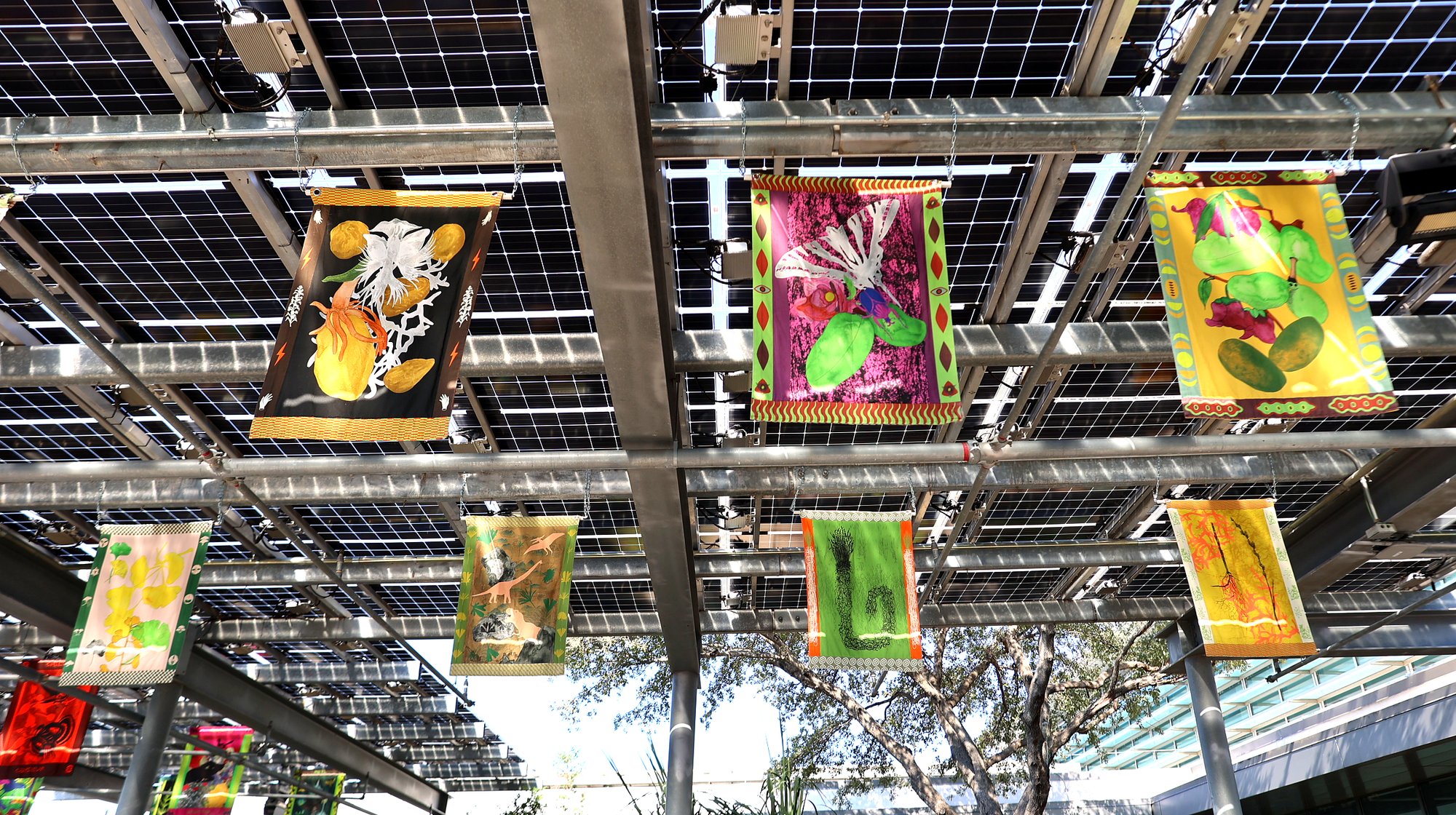



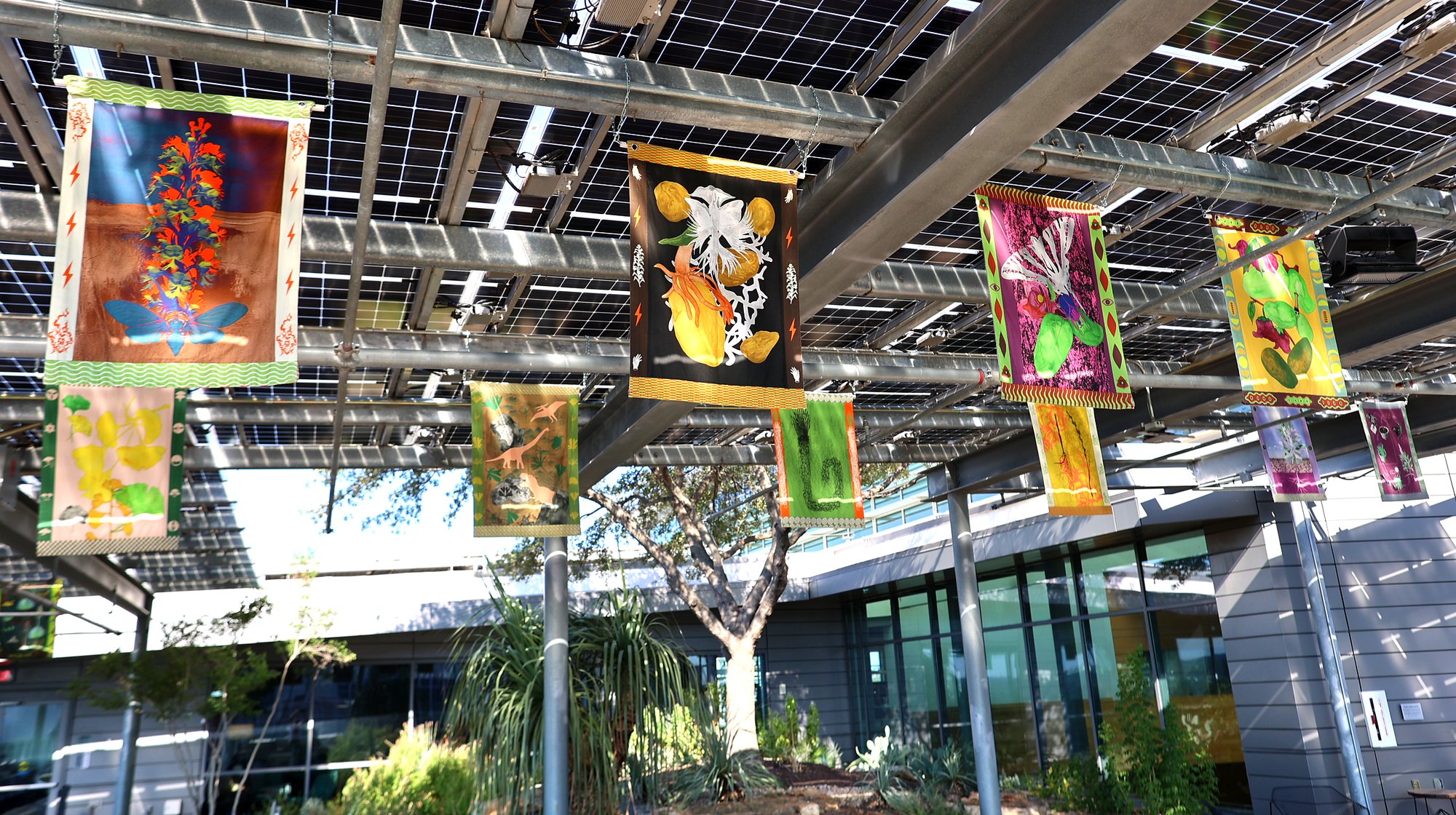
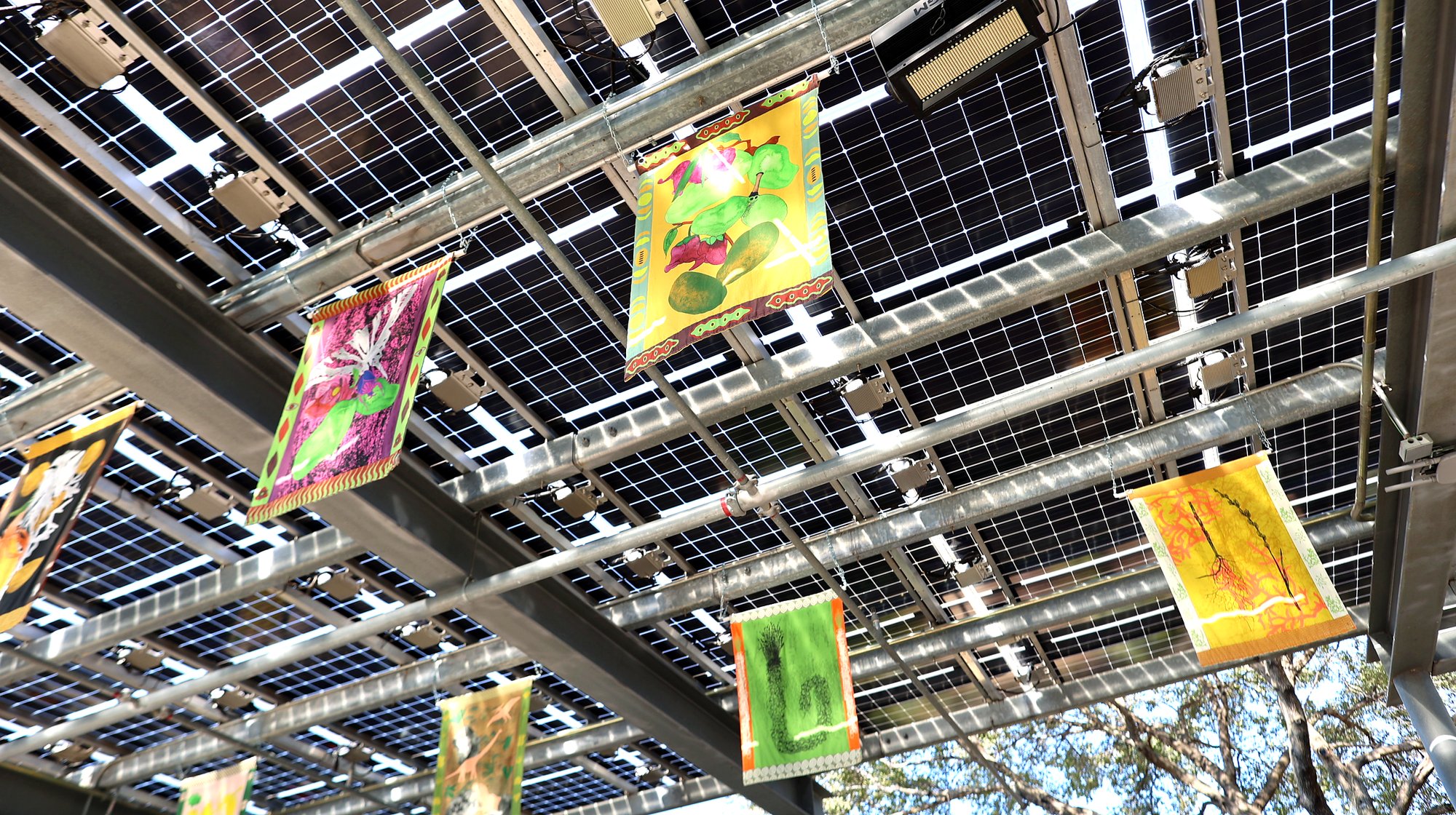
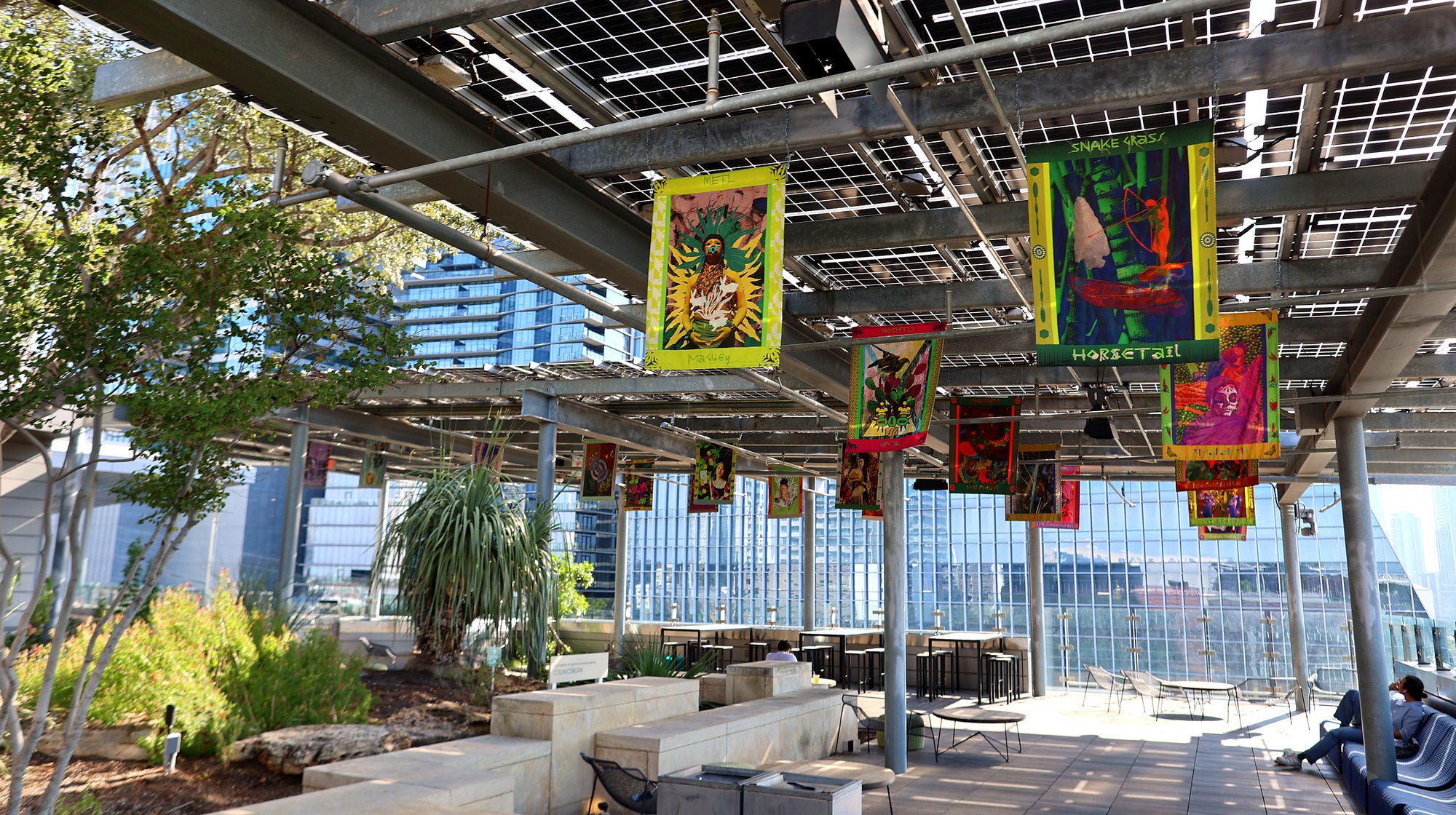
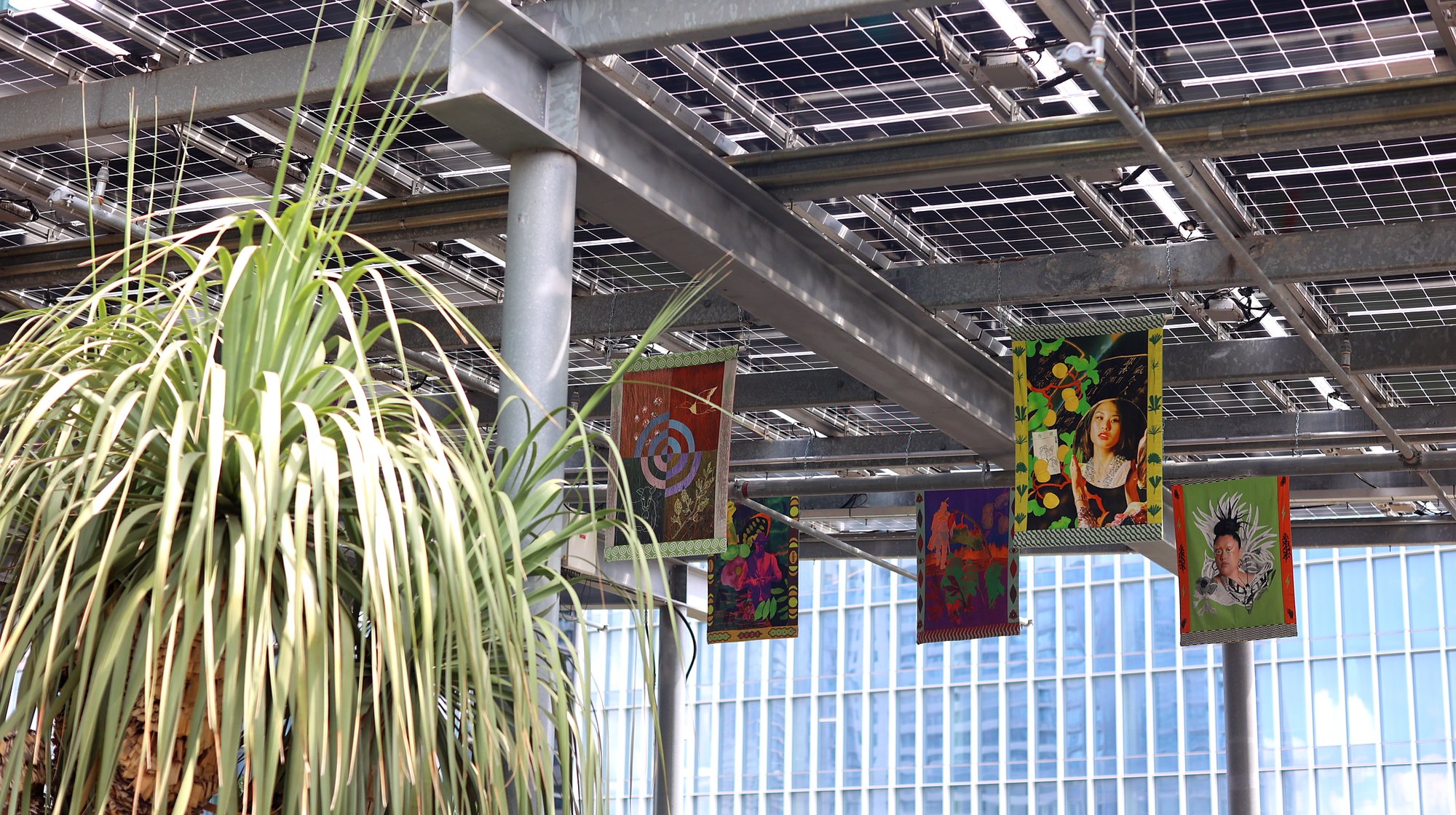
CHICAGO BOTANIC GARDEN
Summer 2024
The original Rhizomatic installation debuted at Chicago Botanic Garden's Regenstein Fruit & Vegetable Garden. This exhibition explored the connections between diverse plant species and cultural knowledge systems, featuring collaborative artwork that integrated with the garden's existing landscape and educational programming.

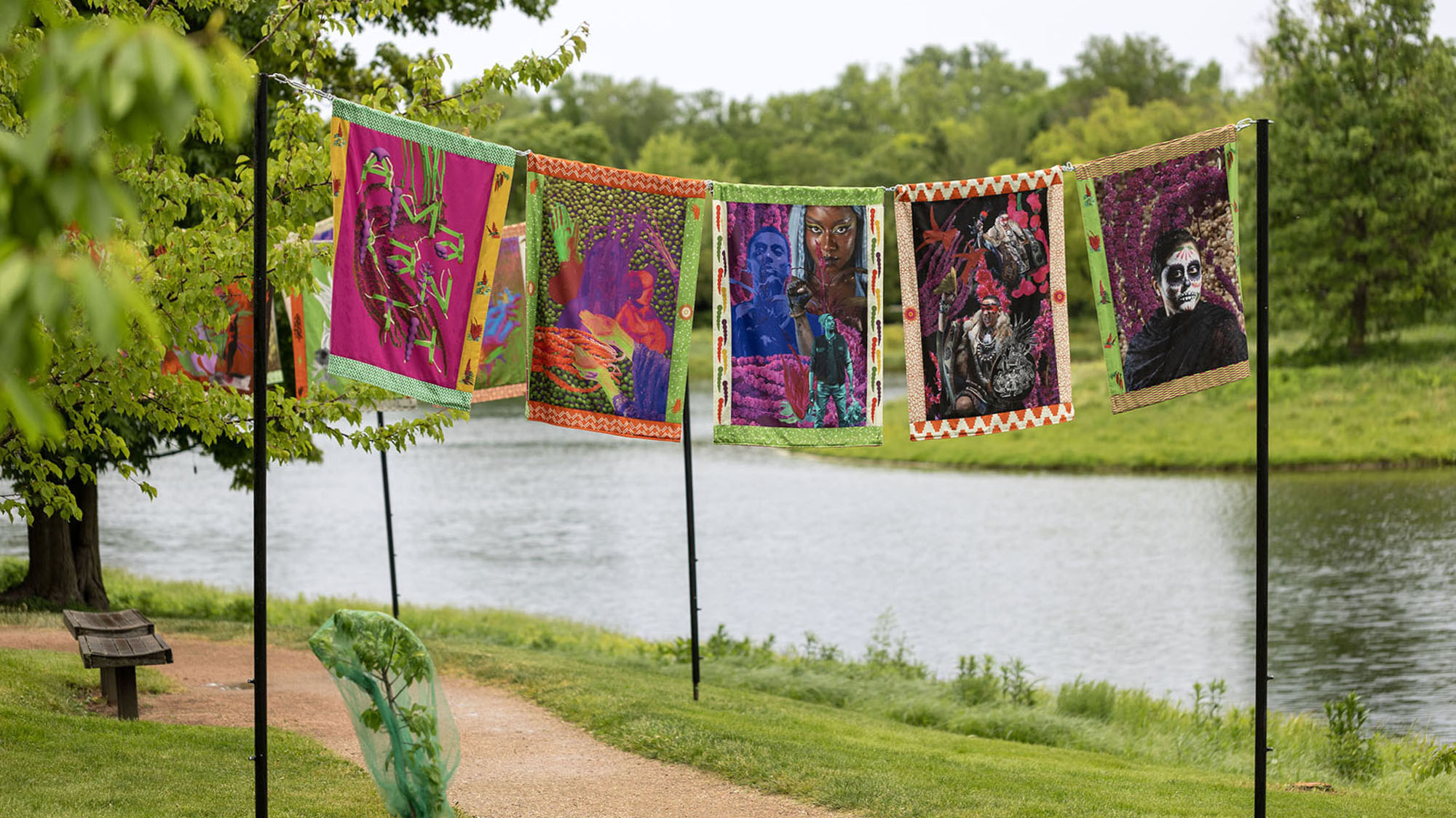
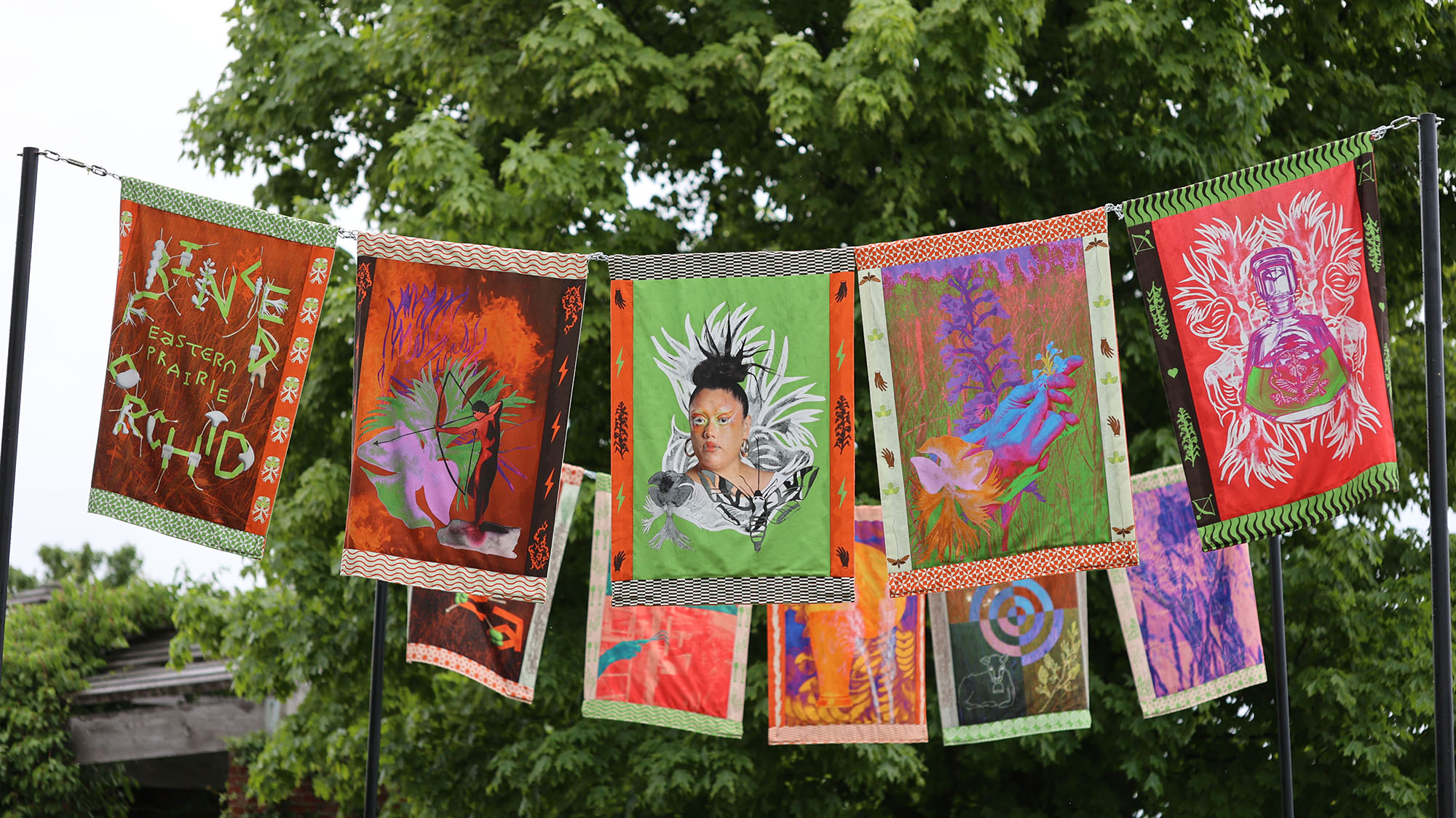

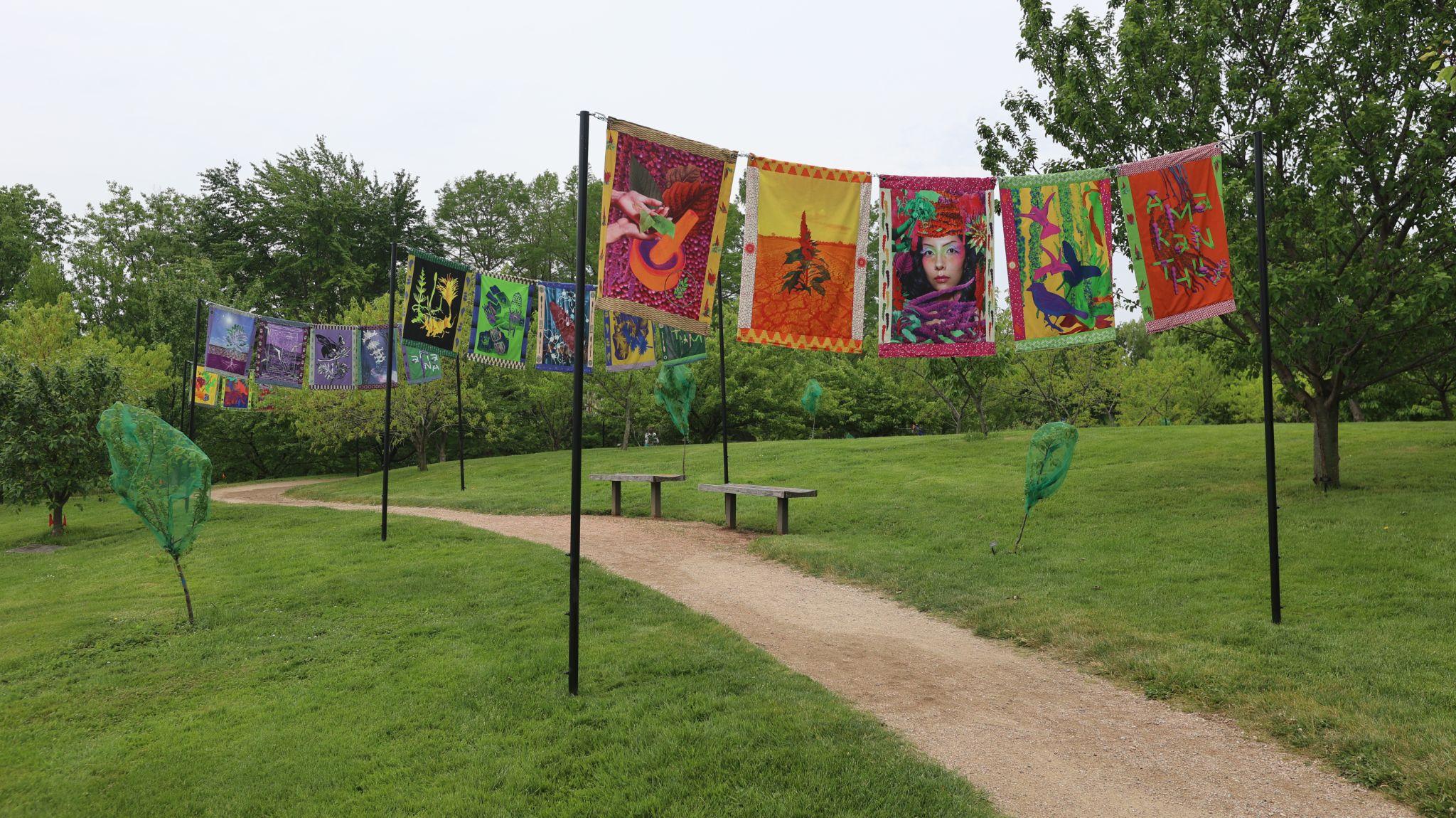
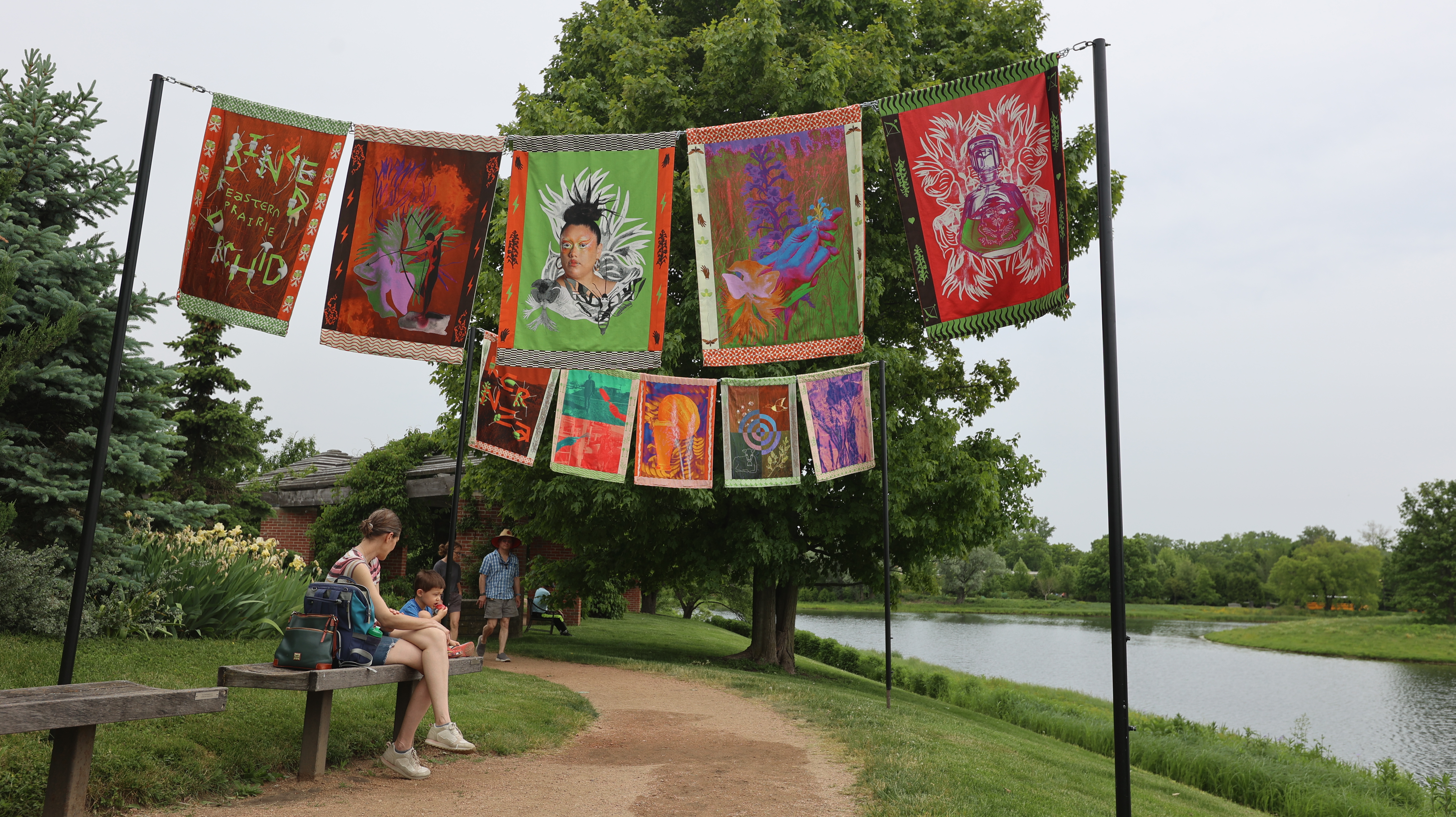
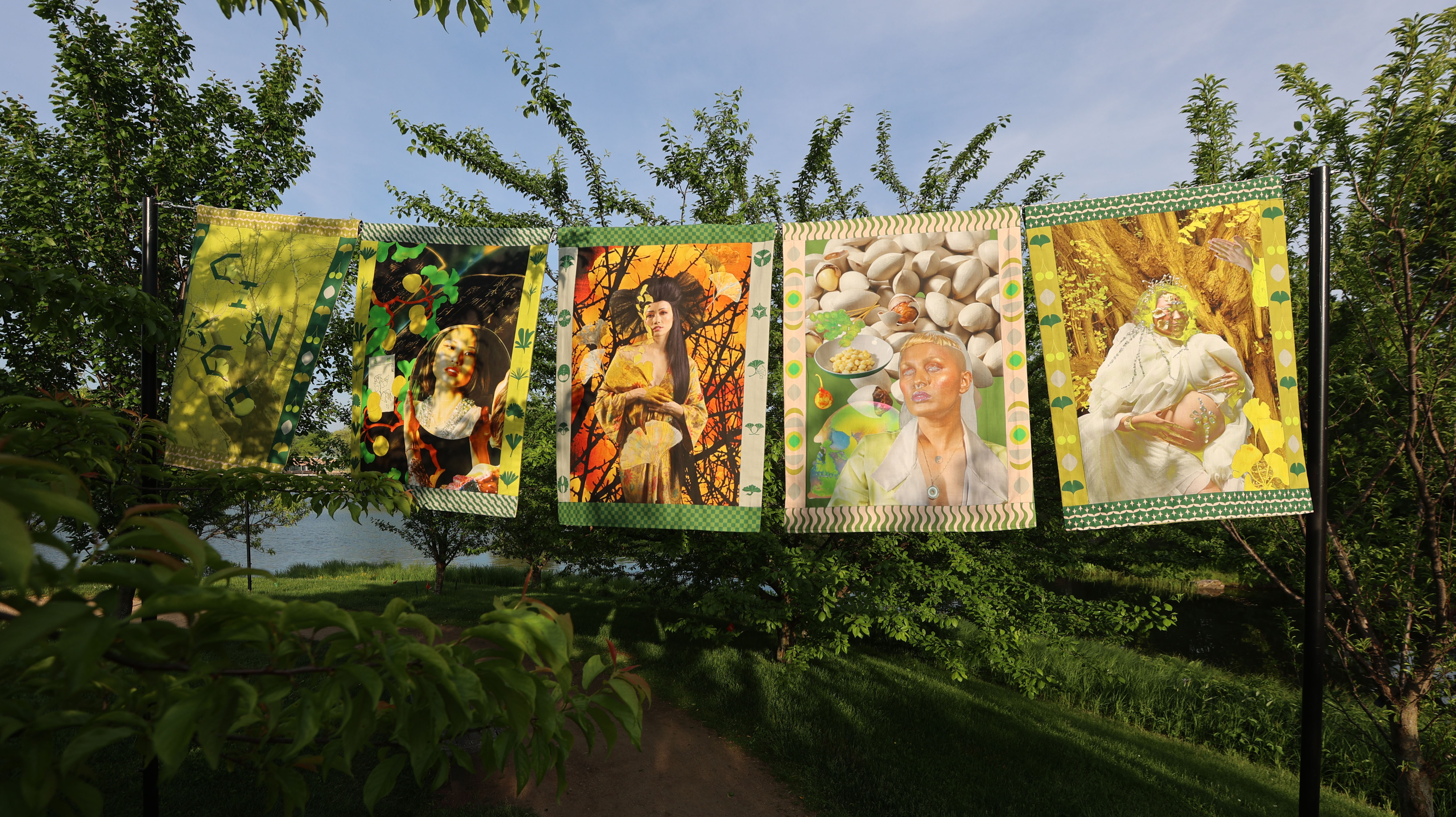
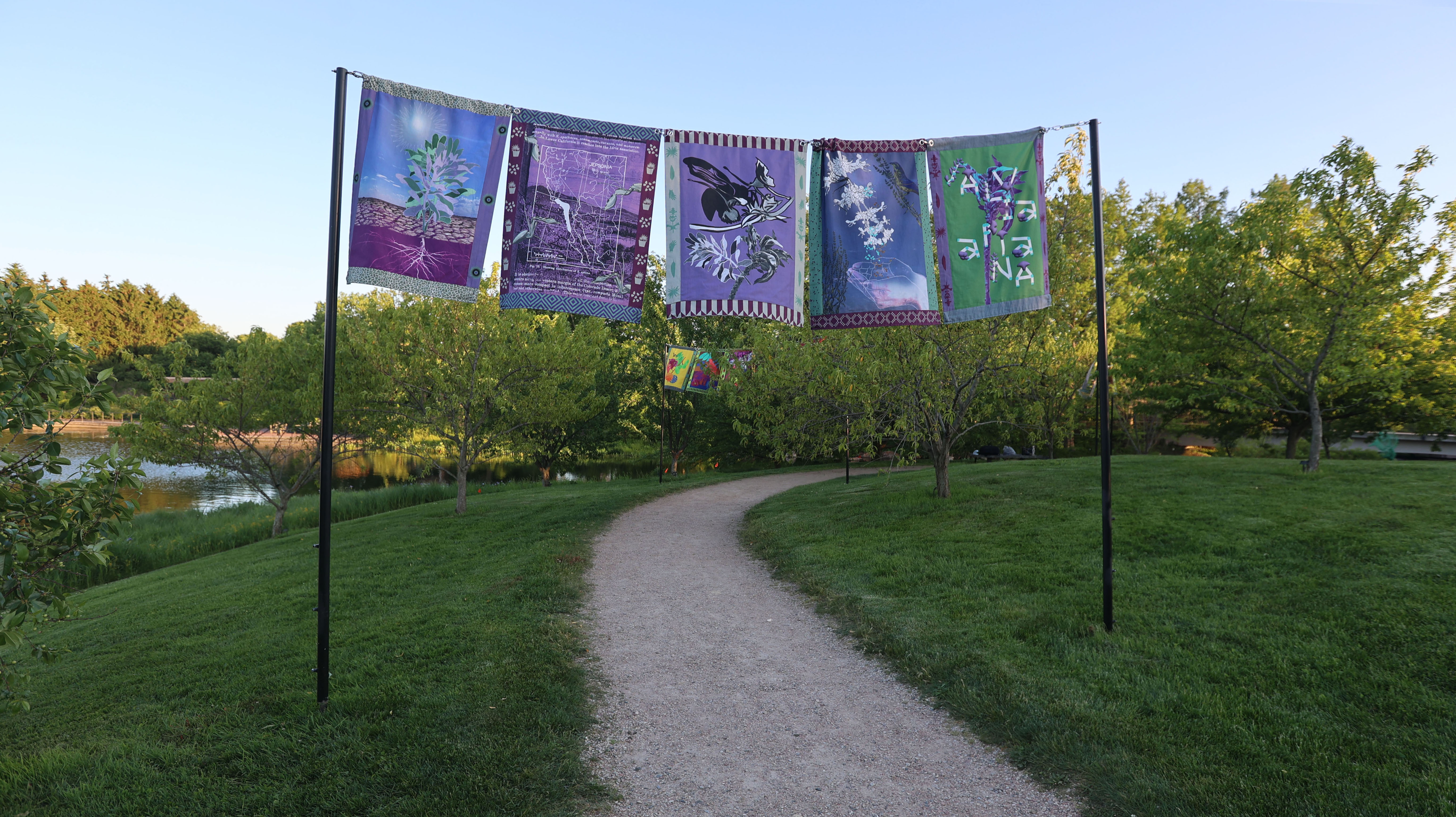
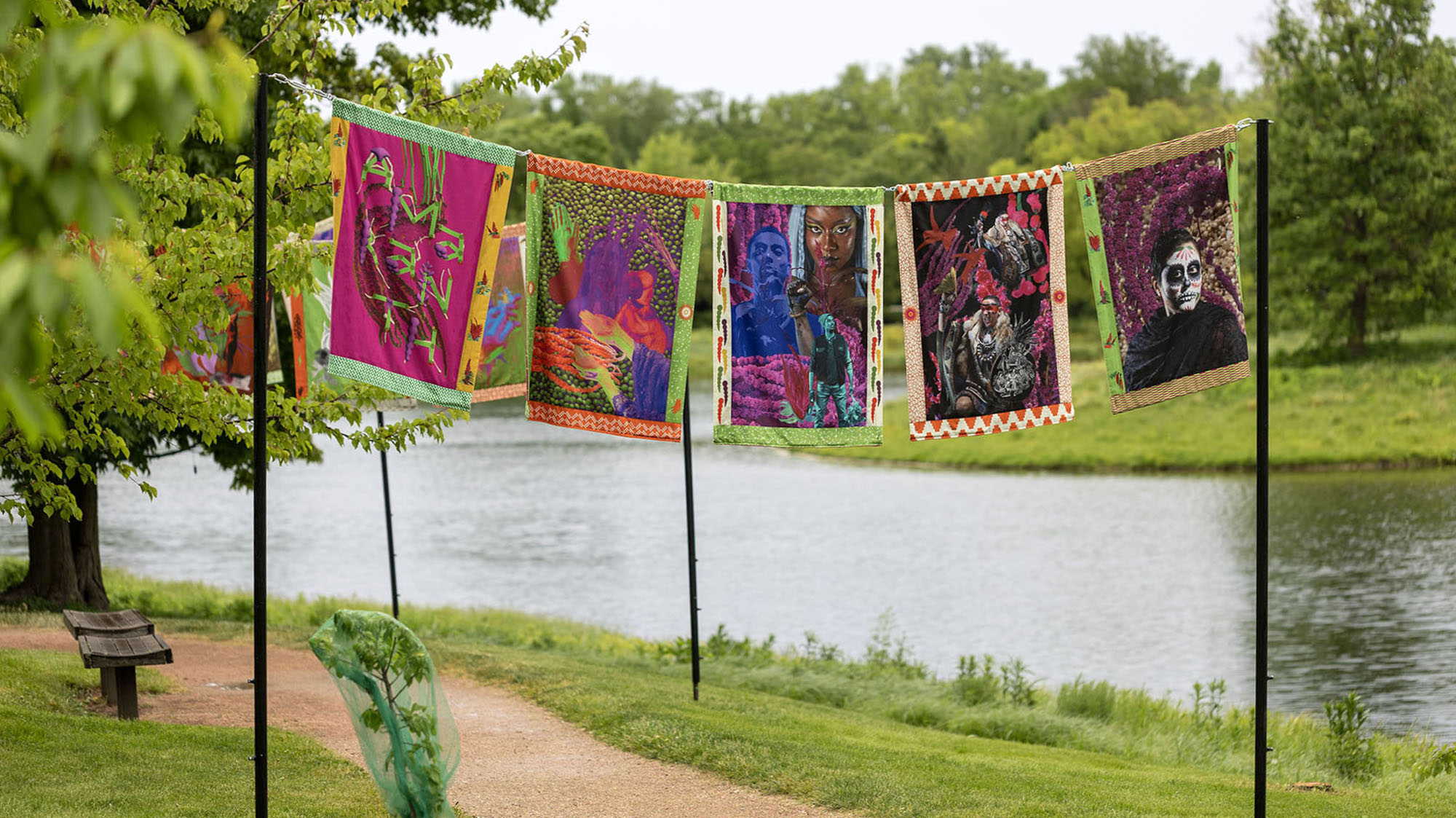
Featured Tapestry Designs
Each tapestry explores a specific Texas native plant through both Indigenous cultural narratives and scientific botanical perspectives. The double-sided designs allow viewers to experience both knowledge systems.
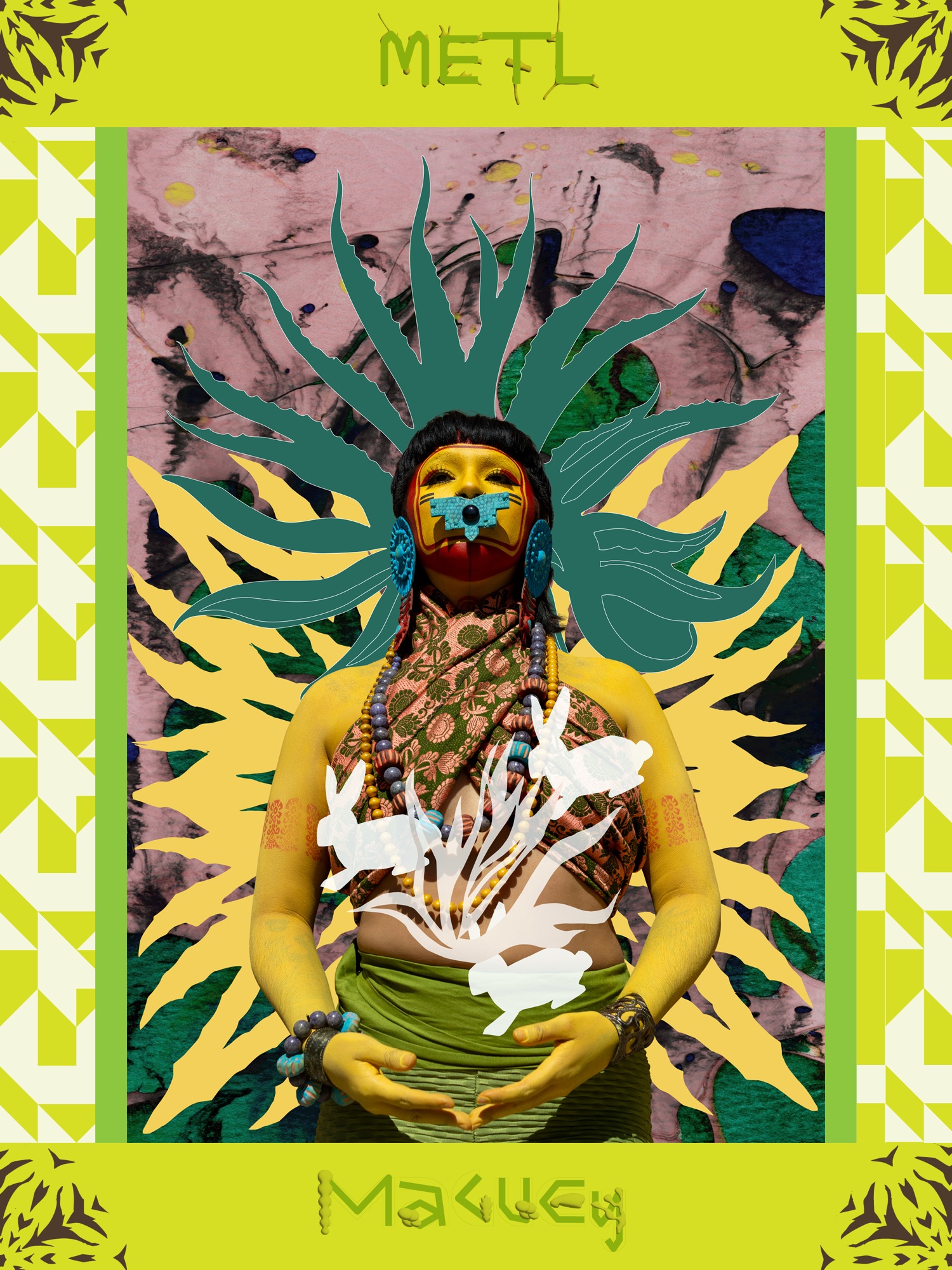
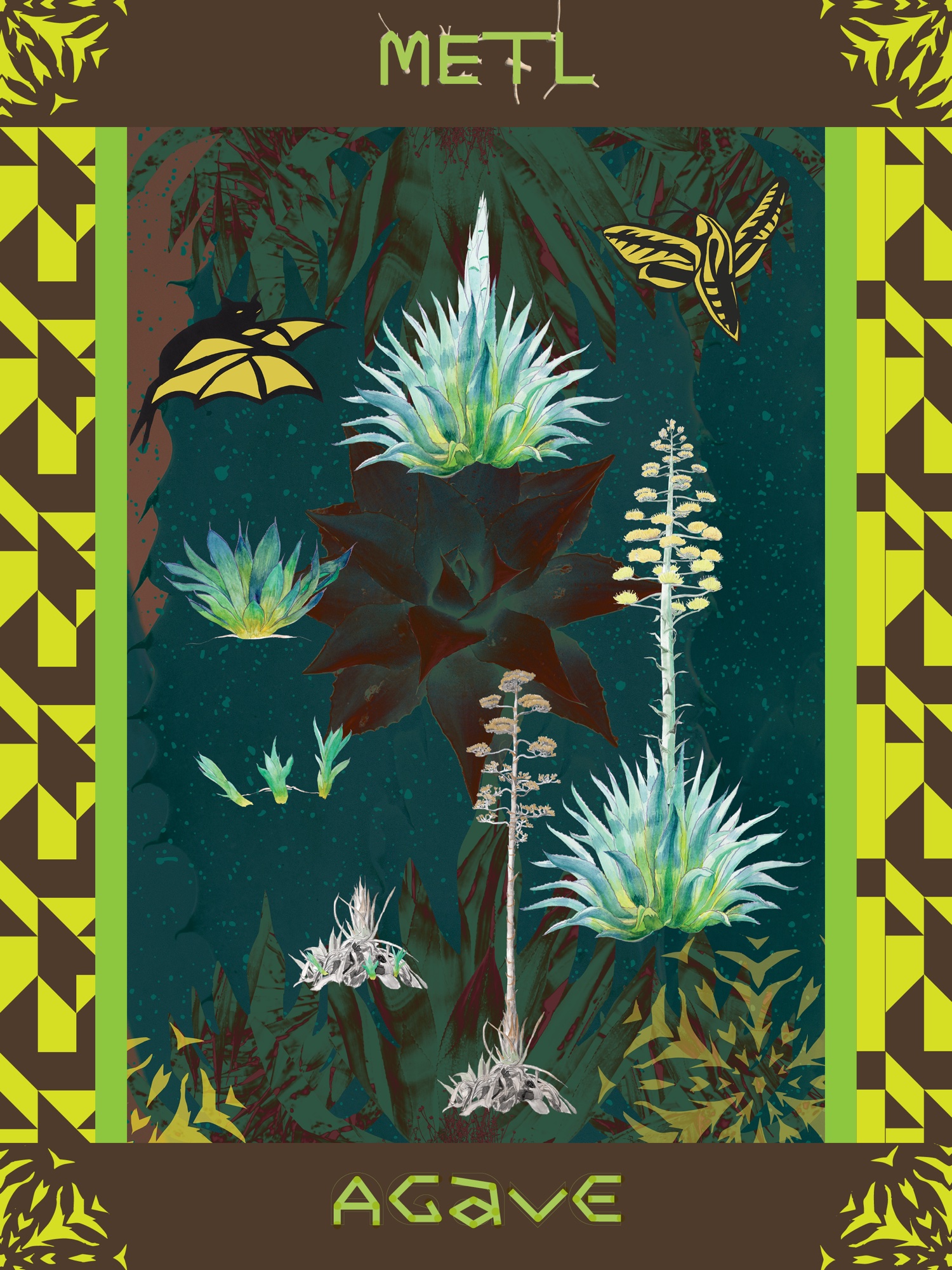
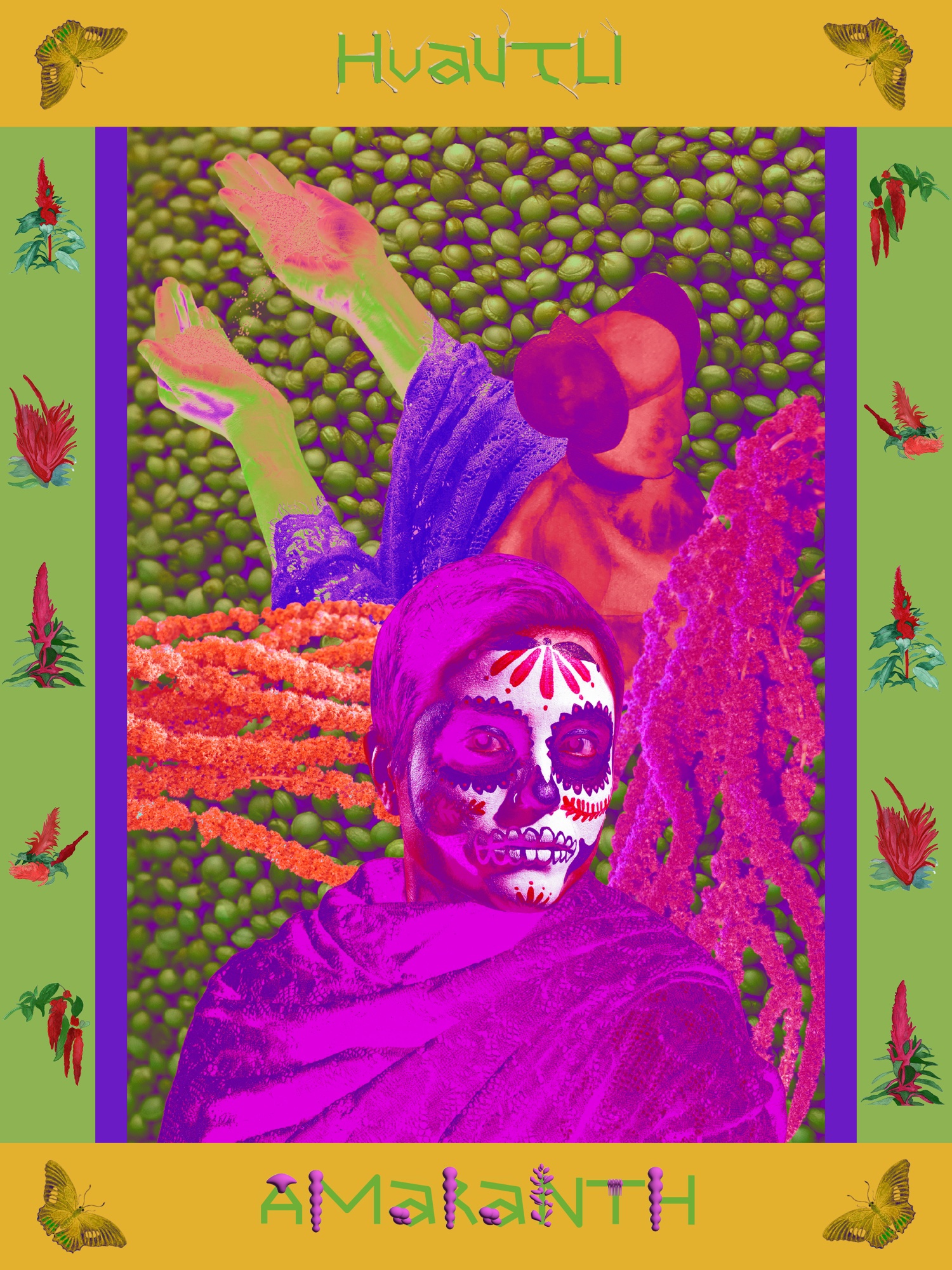
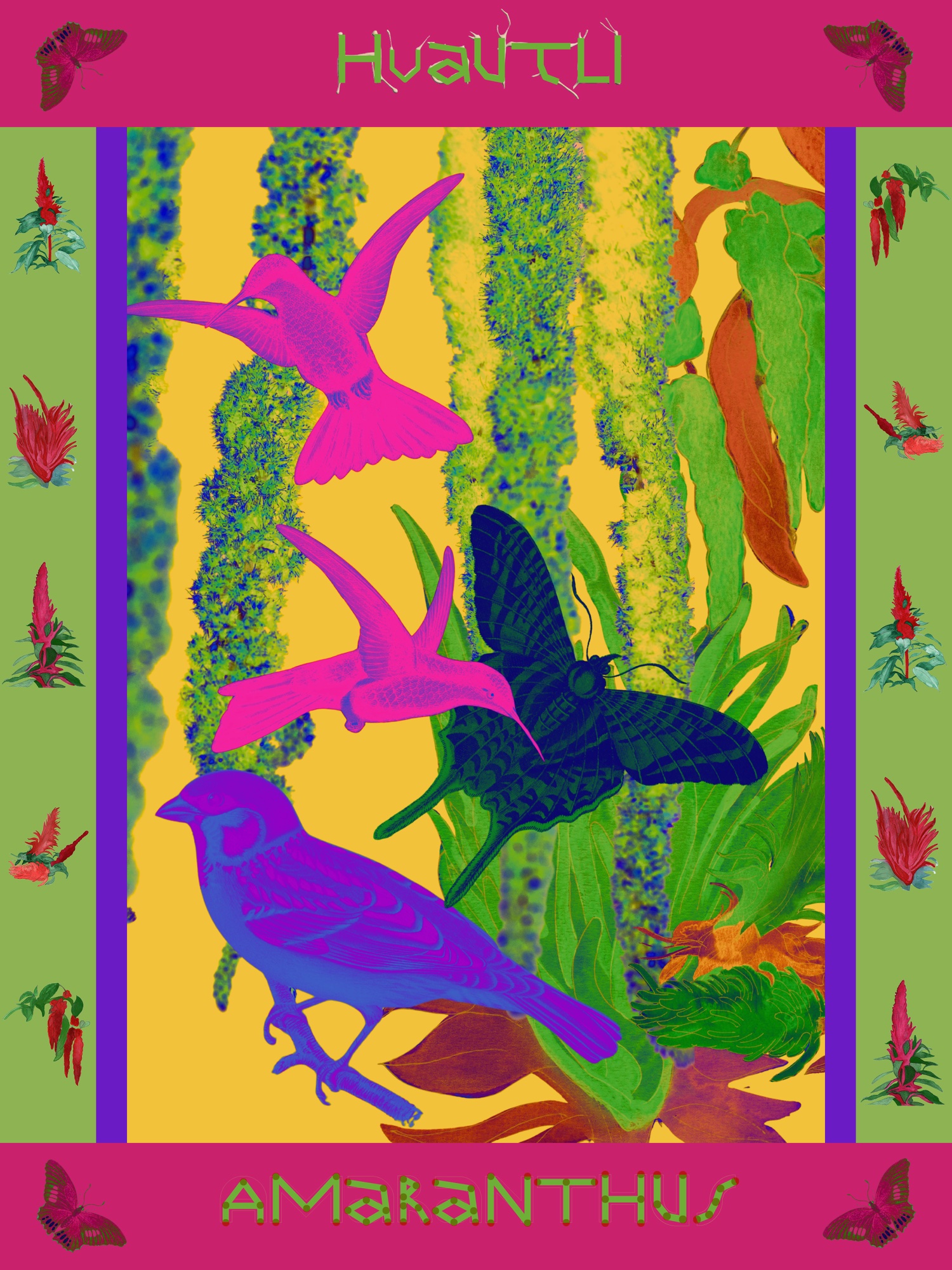
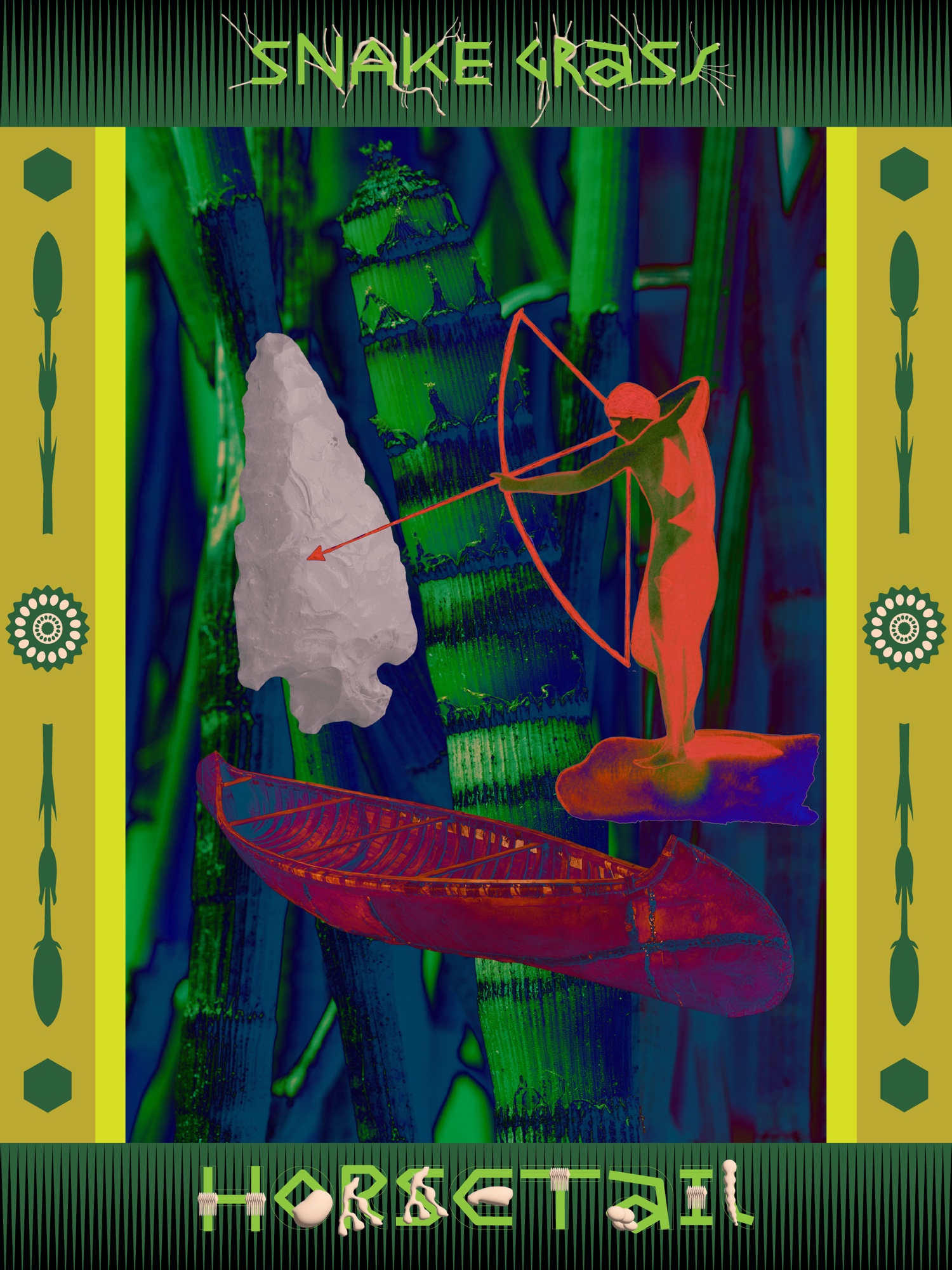
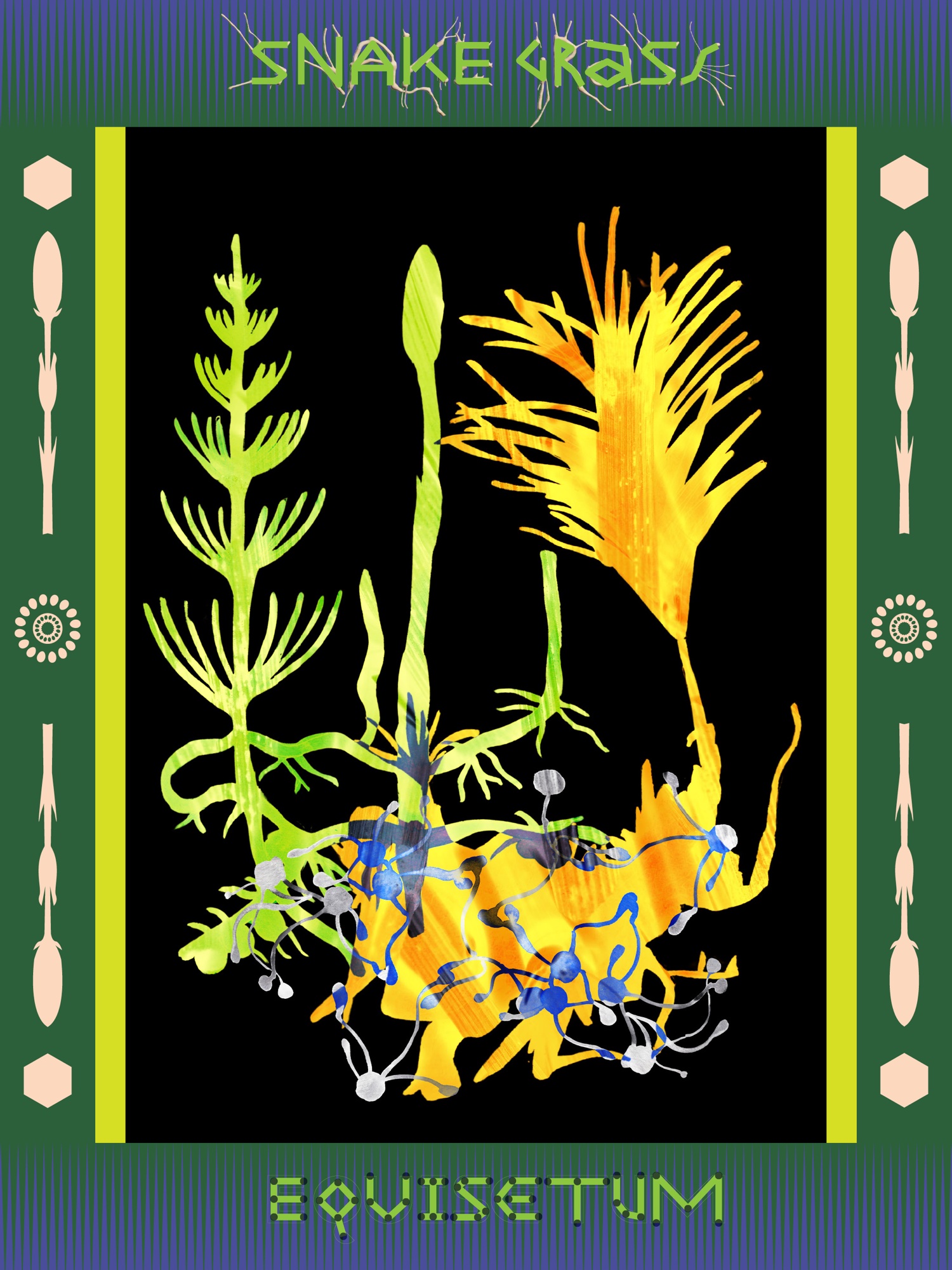
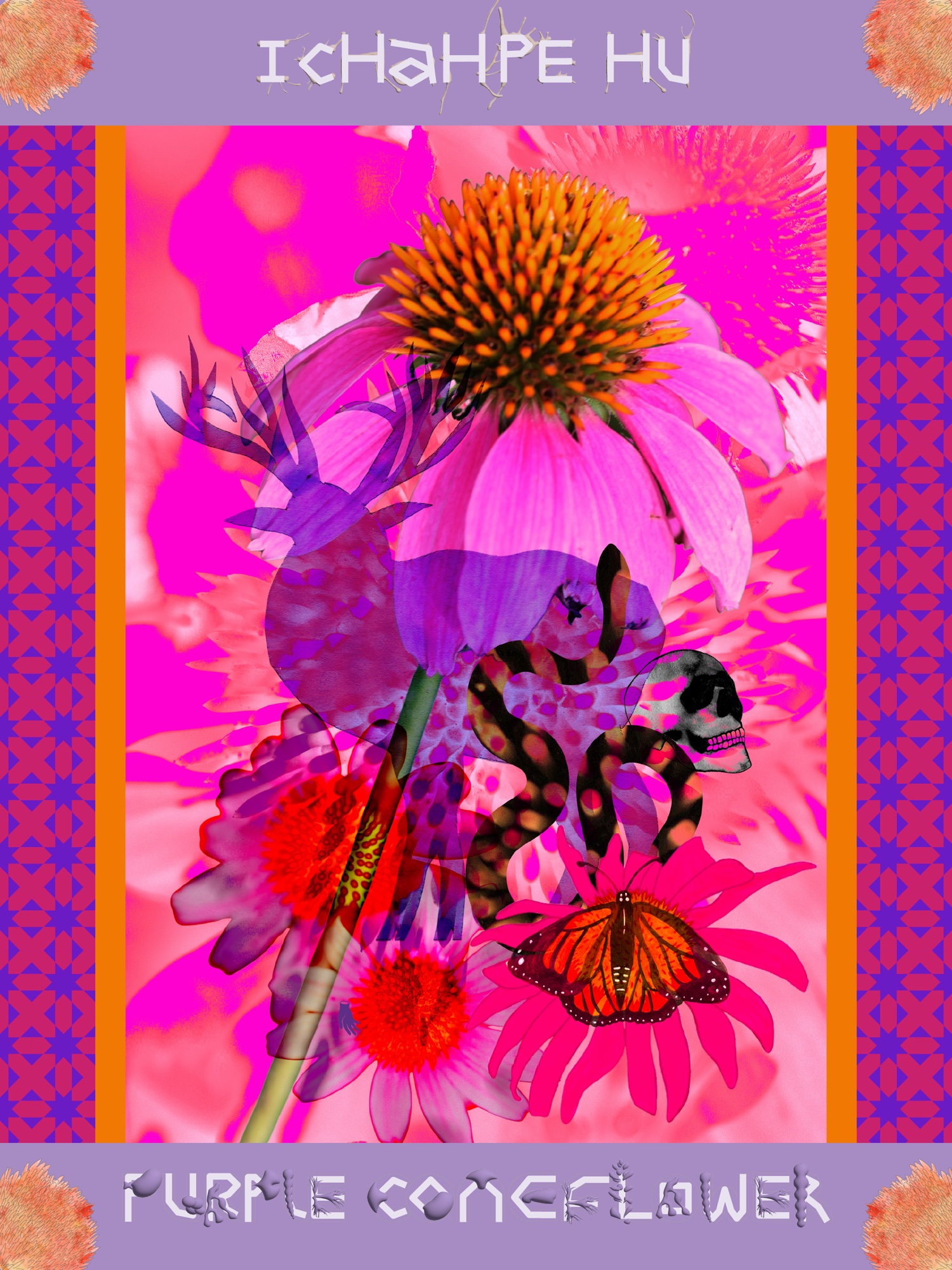


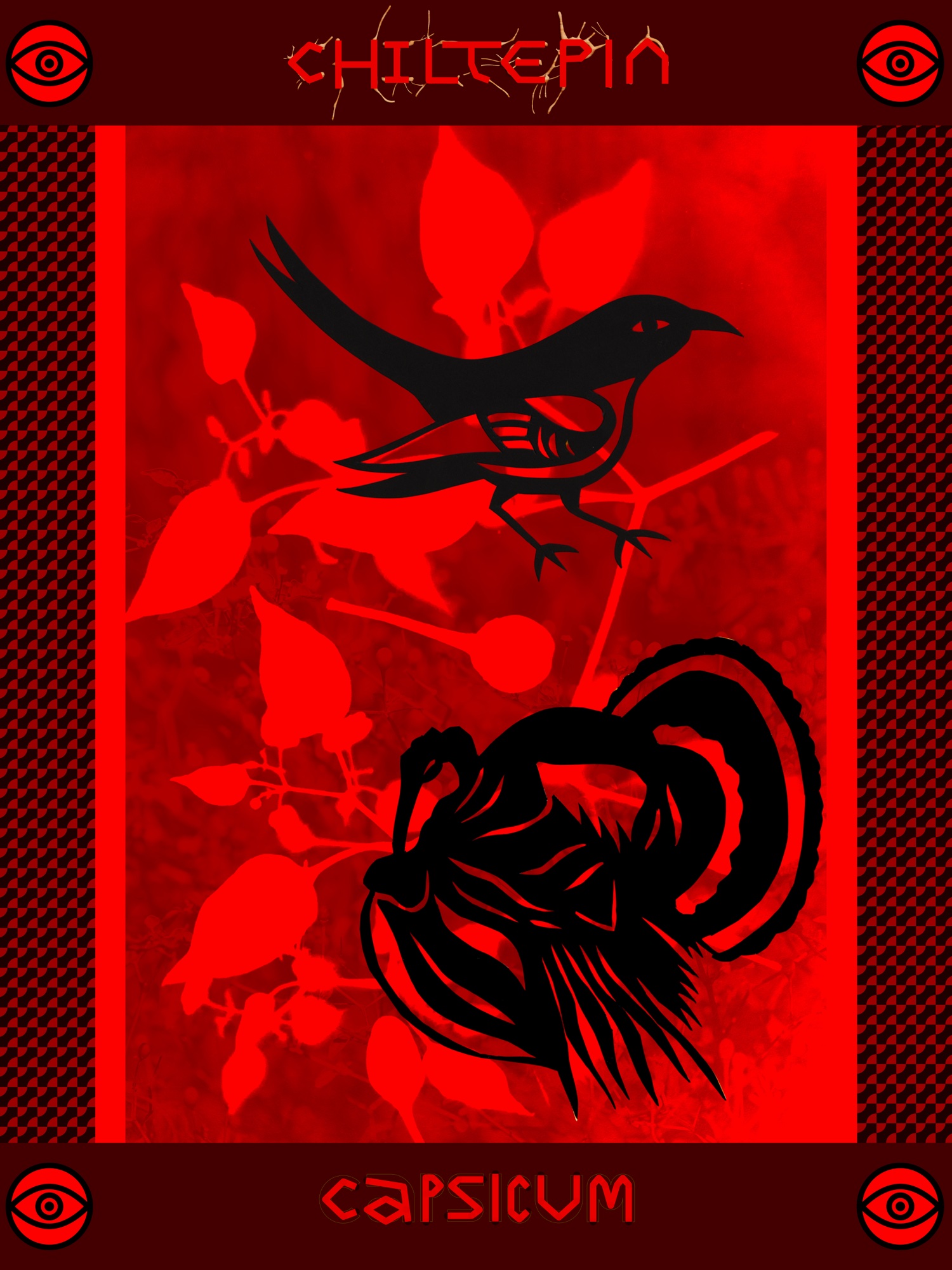

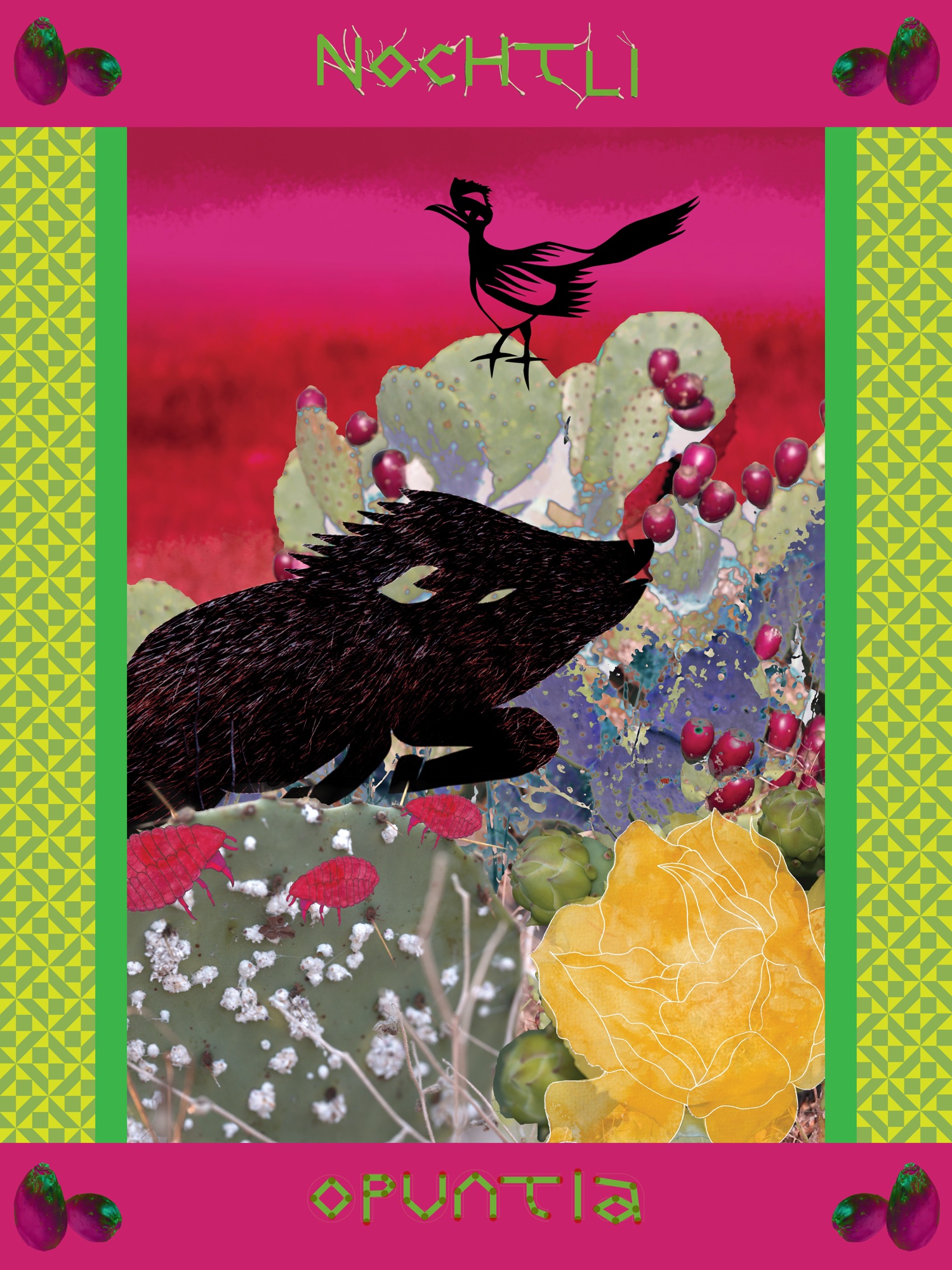
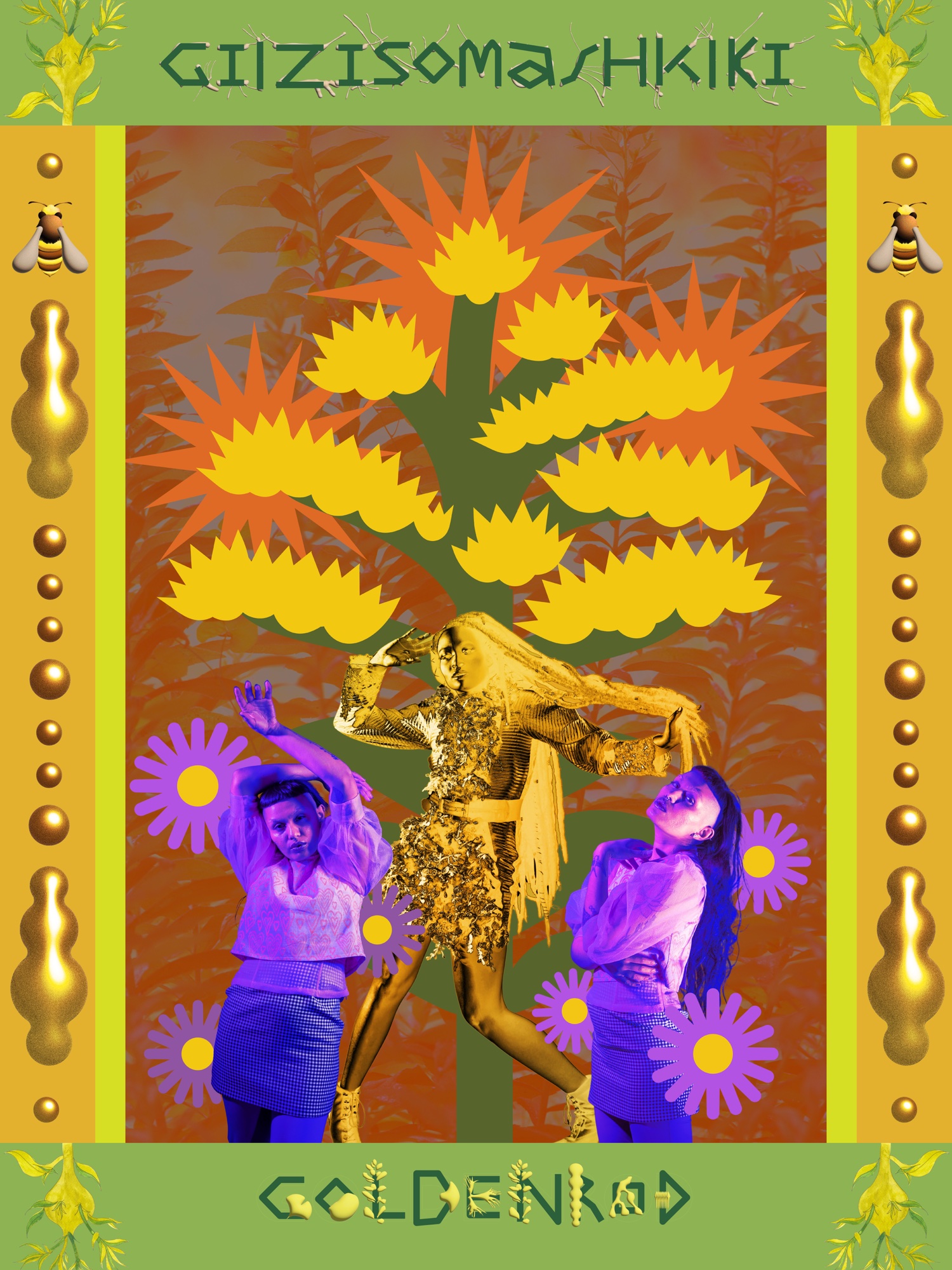

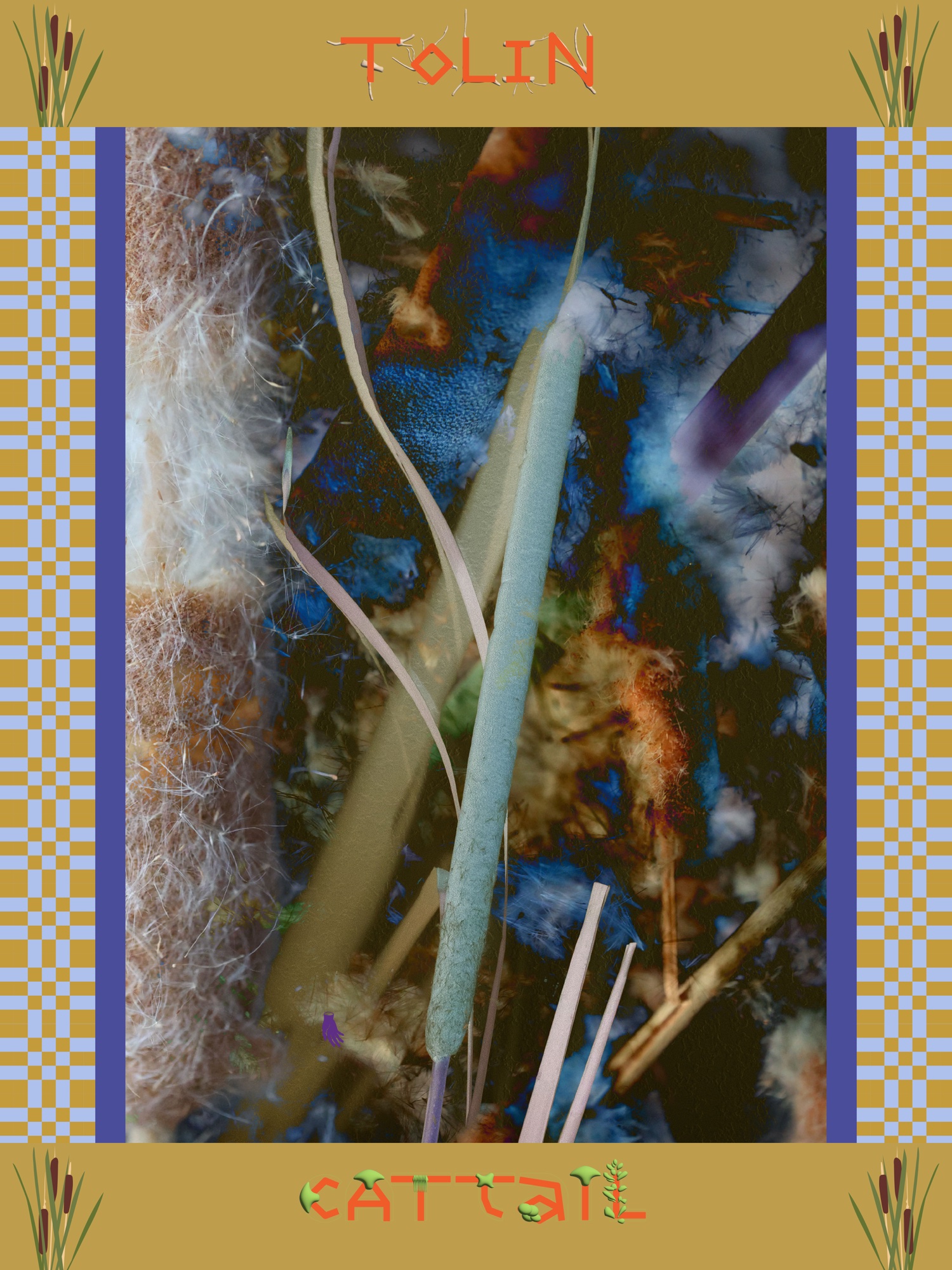
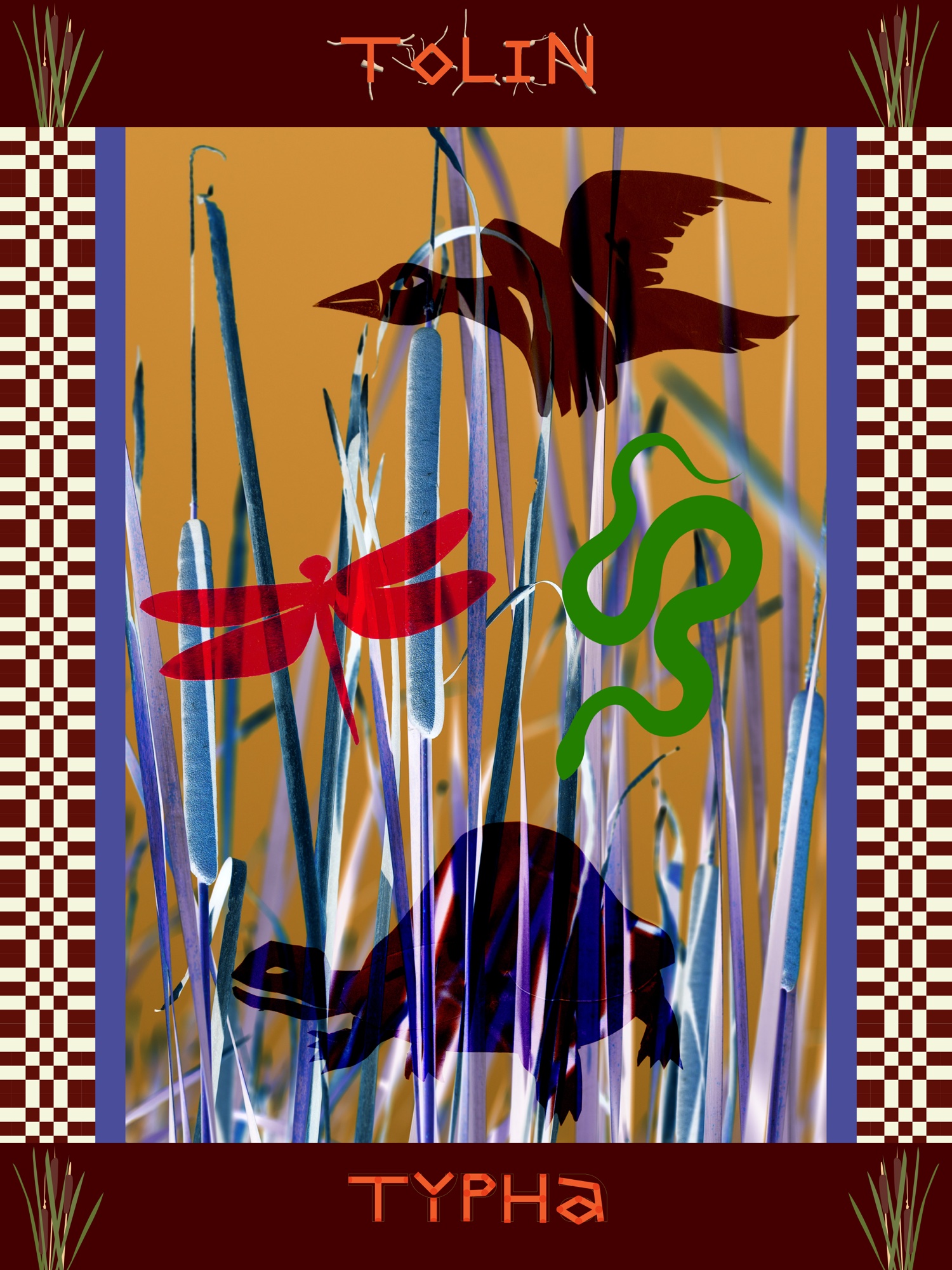
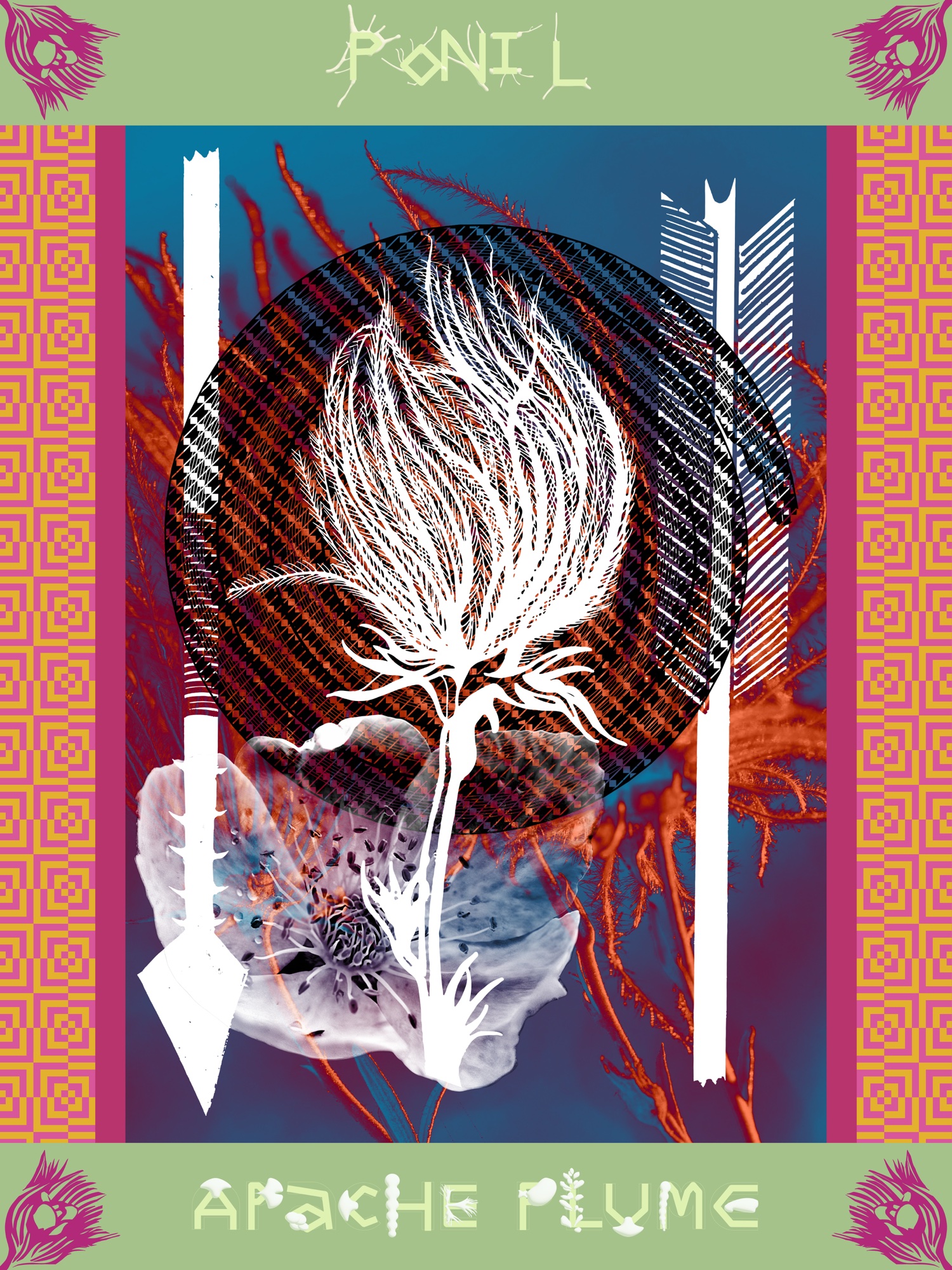


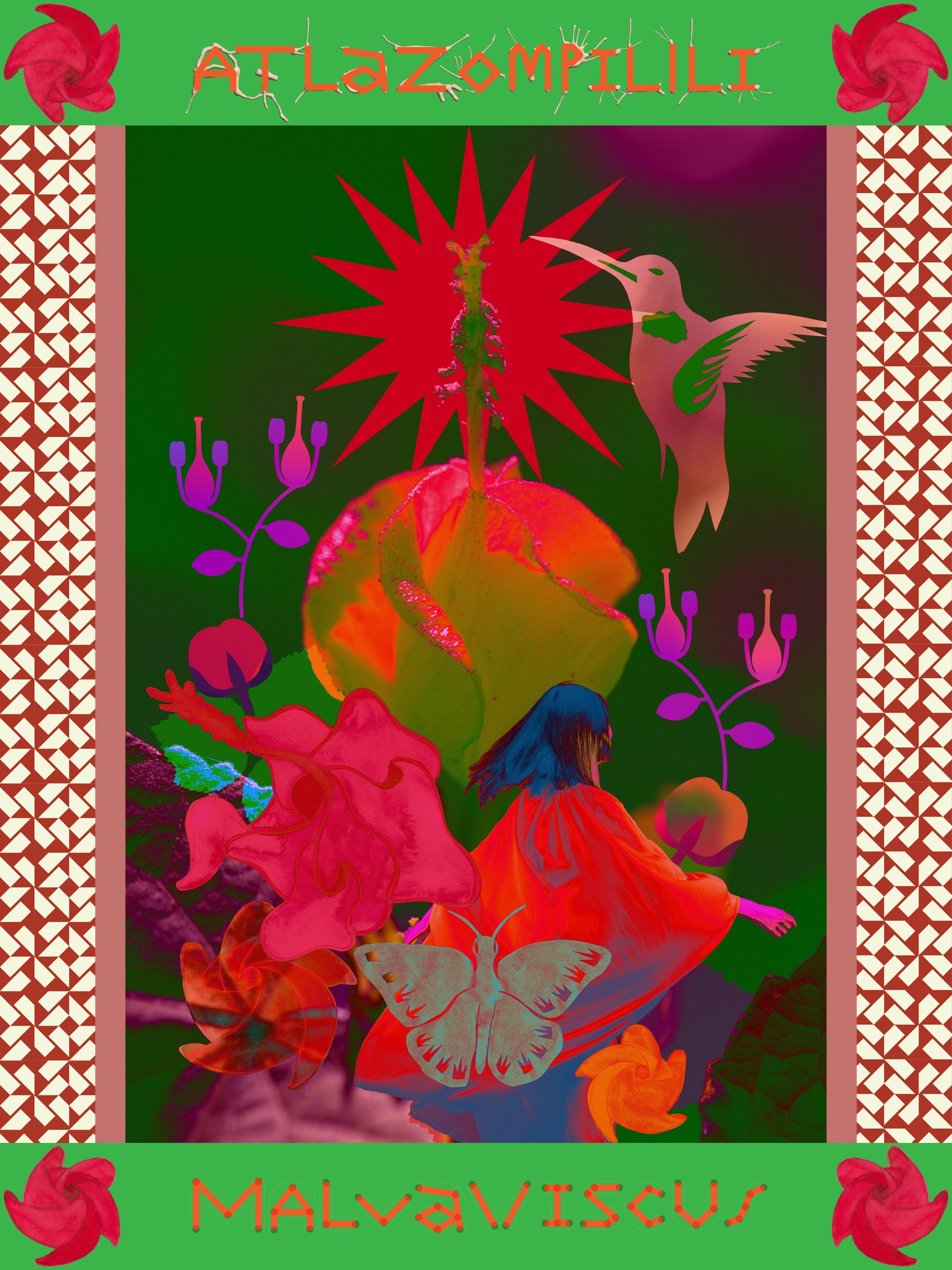
Featured Native Plants
The installation highlights ten native plants significant to Indigenous cultures and Texas ecology, each explored through both traditional knowledge and botanical science.
Ichahpe hu
Purple Coneflower (Echinacea purpurea)
Essential medicinal plant used for centuries by Indigenous peoples to treat infections, wounds, and boost immunity. The plant's distinctive purple petals and cone-shaped center make it both beautiful and powerful.
Gilzisomashkiki
Goldenrod (Solidago)
Known as "Yellow Top Medicine," this bright flowering plant was used traditionally for treating digestive issues and respiratory ailments. Despite common misconceptions, goldenrod does not cause allergies.
Nochtli
Prickly Pear (Opuntia)
Sacred food and medicine to many Indigenous communities, the prickly pear cactus provides both nutritious pads (nopales) and fruit (tunas). It symbolizes resilience and adaptability in harsh environments.
Tolin
Cattail (Typha latifolia)
Called the "supermarket of the swamp," virtually every part of the cattail plant is edible and useful. Indigenous peoples used it for food, medicine, basketry, and building materials.
Ponil
Apache Plume (Fallugia paradoxa)
Spiritual ceremonial plant with distinctive feathery seed heads that resemble plumes. Used traditionally in ceremonies and for making arrows, its delicate flowers belie its hardy desert nature.
Chiltepin
Bird Pepper (Capsicum annuum)
Known as the "mother of all chiles," this tiny wild pepper is considered the ancestor of all domesticated chile peppers. Birds spread its seeds, creating networks of wild plants across the landscape.
Huautli
Amaranth (Amaranthus)
Ancient sacred grain cultivated for over 8,000 years. Rich in protein and nutrients, amaranth was a staple food of the Aztecs and remains important in traditional ceremonies and cuisine.
Snake Grass
Horsetail (Equisetum)
A living fossil that has existed for 100 million years, horsetail contains silica and was used traditionally for polishing, healing, and as a medicinal tea for kidney and bladder health.
Atlazomilili
Turk's Cap (Malvaviscus arboreus)
Hummingbird messenger plant with distinctive red flowers that never fully open. The edible fruits and flowers have been used traditionally, and the plant attracts important pollinators.
Metl
Maguey (Agave americana)
Called the "tree of wonders," every part of the agave plant has traditional uses - from food and fiber to soap and medicine. It takes years to mature before flowering once in a spectacular display.
Purchase Original Tapestries
Multimedia digital art printed on fabric - featuring original illustrations, photography, and graphic design exploring Texas native plants through Indigenous knowledge networks and rhizomatic connections.
Artwork Details
- Original illustrations and high-resolution photography
- Custom graphic design
- Double-sided printing
- Dowel and hanging chain included
- Ready to display
Payment Method
Questions? Email us at essentialscreative@gmail.com or text (210) 827-6559
About Essentials Creative
Essentials Creative is a multimedia collective producing holistic applied arts experiences. These multifaceted events incorporate photography, fashion, graphic design, video, projection, animation, and installation.
We create a platform for underrepresented artists to express themselves and find support within their field. We are composed of and embrace artists of color, women, and members of the LGBTQIA community.
Fluidity, diversity, experimentation, and collaboration are the threads that always run through Essentials' projects, no matter the medium.